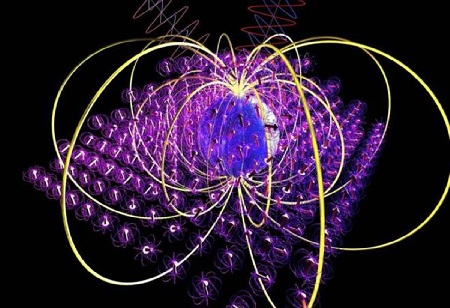The term, Quantum Technology (QT), has become immensely popular and is oft-used beyond doubt. A simple search on Google’s News section yielded about 75,00,000 results; the top news being Google and Amazon scheduled to attend a White House forum on Quantum Technology.
Now, before we get into the whys of QT, let us take a step back to understand its origins. QT is based on Quantum theory, which is the theoretical basis of modern physics that explains the nature and behaviour of matter and energy at atomic and subatomic levels.
Interestingly, the concept of atoms is more than 2,000 years old and we owe it to ancient Greek philosophers, who introduced it. Atom means ‘one that is uncuttable’.
The 19th century saw the formulation of hypotheses about subatomic structure and finally in the initial years of the 20th century, scientists including Max Planck and Albert Einstein immensely contributed to our understanding of Quantum theory. The etymology of the term, Quantum, is itself fascinating; it is derived from Latin, meaning ‘how great’ or ‘how much’.
Indeed, the potential of Quantum Technology is limitless. Countries and companies are investing billions of dollars in research and development, and building quantum communication networks to secure their cyberspace especially in the areas of sovereignty and defence. Quantum computing is an important application of QT. Quantum computers fundamentally process information differently than classical computers.
Instead of using transistors that can only represent either the ‘1’ or the ‘0’ of binary information at a single time, quantum computers use qubits that can represent both ‘0’ and ‘1’ simultaneously.
Instead of using transistors that can only represent either the ‘1’ or the ‘0’ of binary information at a single time, quantum computers use qubits that can represent both ‘0’ and ‘1’ simultaneously. Since the system operates beyond regular logic, reason and predictability, its randomness of possibilities give access to an exponentially larger computational space.
QT can be used in the areas of computing, supply chain logistics, cryptography, sensing, biology, meteorology, cyber security, artificial intelligence, telecom, banking, internet-of-things, defence, and healthcare. In short, QT is tipped to come up in a big way in our everyday lives in the course of the next 10 years.
Technology giants such as Google, IBM, Amazon, Toshiba and Microsoft have invested heavily in QT. Google recently achieved quantum supremacy by solving a problem in 200 seconds that would take a classical computer 10,000 years! IBM, in June 2021, launched ‘IBM Quantum System One’ in Germany, the most powerful quantum computer in Europe. IBM has a network of 150 organizations, including research labs, start-ups, universities and enterprises that are able to access its quantum computers via the cloud.
India too is taking steps towards adopting QT. In the Union Budget 2020, India allocated over $1 billion, over five years, towards the National Mission on Quantum Technology and Applications (NMQTA). Areas of focus include fundamental science, technology development, human and infrastructural resource generation, innovation and start-ups to address issues concerning national priorities.
Separately, the Indian Space Research Organization (ISRO) plans to build a national quantum communication network in collaboration with Department of Telecommunications. The Department of Science and Technology, which is overseeing disbursement of the allocated $1 billion fund, has identified government institutions to work along with the private sector on areas such as product development, R&D and skills development.
India has, so far, achieved approximately 100 kilometers of quantum network, lagging far behind other countries that have managed to develop thousands of kilometers of quantum network. To quickly progress, India will need to focus on product development and commercialisation, in addition to new, more intensive and sustained R&D efforts. Its impetus on indigenous manufacturing of semiconductors will also go a long way, as these are critical and essential components for development and commercialisation of quantum technologies.
Most countries that have achieved significant progress in quantum have one thing in common – strong collaboration among the government, industry and academia. India, too, will need to have these three elements work closely on specific programmes and projects to develop indigenous or ‘Made-in-India’ QT and networks to make its mark on the global map.
